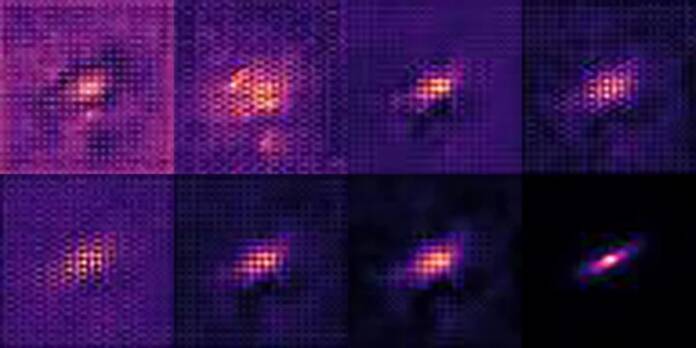Earth’s atmosphere distorts the light coming from distant stars, planets and galaxies before it reaches our eyes, resulting in blurry astronomical images, riddled with errors that make it difficult to understand the nature of the universe. To eliminate this distortion, astrophysicists use technologies that produce more accurate digital images, with less noise.
A more efficient solution was unveiled through a new study by researchers at Northwestern University and Tsinghua University in Beijing, which has presented an artificial intelligence (AI) algorithm adapted to fine-tune astrophotography. The algorithm works faster and produces more realistic and sharper images than current technologies, allowing physicists to obtain better scientific measurements.
The Earth’s atmosphere and its effect on astronomical images
When light emanates from distant stars, planets, and galaxies, it travels through Earth’s atmosphere before reaching our eyes. Our atmosphere not only blocks certain wavelengths of light, but also distorts the light that reaches Earth. Even clear night skies contain moving air that affects the light that passes through it. That’s why the stars shine and why the best ground-based telescopes are located at high altitudes where the atmosphere is thinnest.
Even images taken by the world’s best ground-based telescopes are blurry due to shifting air pockets in the atmosphere. This blur obscures the shapes of objects in astronomical images, sometimes leading to error-ridden physical measurements essential to understanding the nature of our universe.
The new AI algorithm for astronomical images
Researchers at Northwestern University and Tsinghua University in Beijing adapted a computer vision algorithm used to fine-tune photographs and, for the first time, applied it to astronomical images from ground-based telescopes. They also trained the AI algorithm on simulated data to match the Vera C. Rubin Observatory imaging parameters, so that when the observatory opens next year, the tool will be instantly compatible.
To remove atmospheric distortion from an image, the algorithm pushes the initial image through eight network layers, generating eight intermediate images. The oldest image is on the top left, and the latest image is on the bottom right. The team combined an optimization algorithm with a deep learning network trained on astronomical images, including simulated data matching the imaging parameters of the Vera C. Rubin Observatory.
The team also used the algorithm to correct actual images from the Blanco telescope, located at the Cerro Tololo Inter-American Observatory in Chile. The resulting images, according to the researchers, are clearer and more detailed than images corrected by current technologies.
The research team hopes this new technique will allow astrophysicists to collect more precise data and solve some of the biggest mysteries in the universe. The algorithm also works faster than current technologies, meaning scientists can get to the data they need faster. “The correction of the atmosphere is usually very slow”said Emma Alexander, lead author of the study. “Our algorithm is much faster than other atmosphere correction techniques”he added.
“The reason why people study the universe is to discover new things”Alexander commented. “Our algorithm allows astrophysicists to obtain more precise data, which means they will be able to make more discoveries”he also pointed out, alluding to the positive impact that this technology can have on future research.














